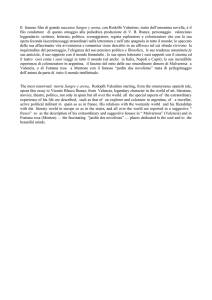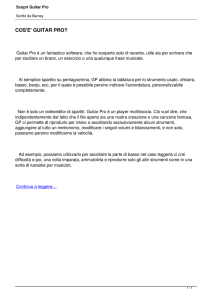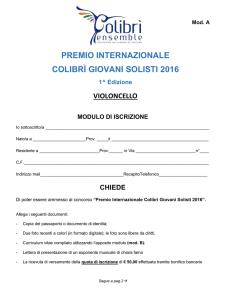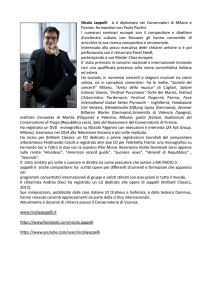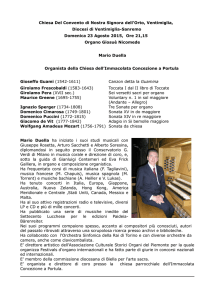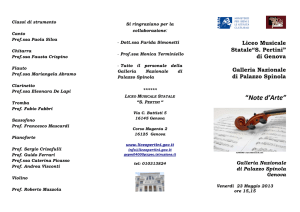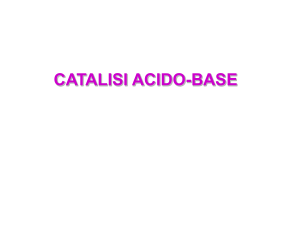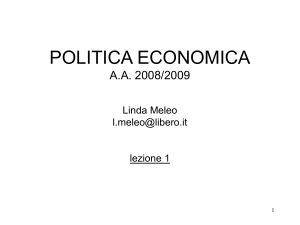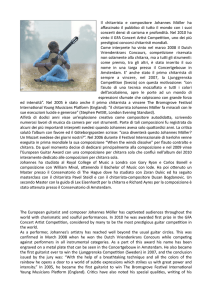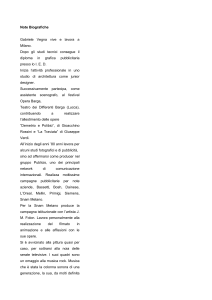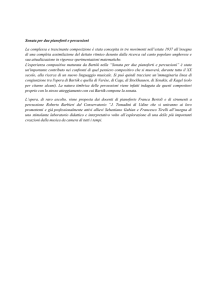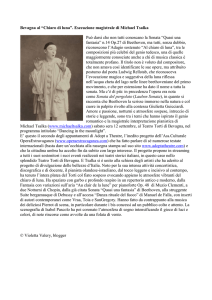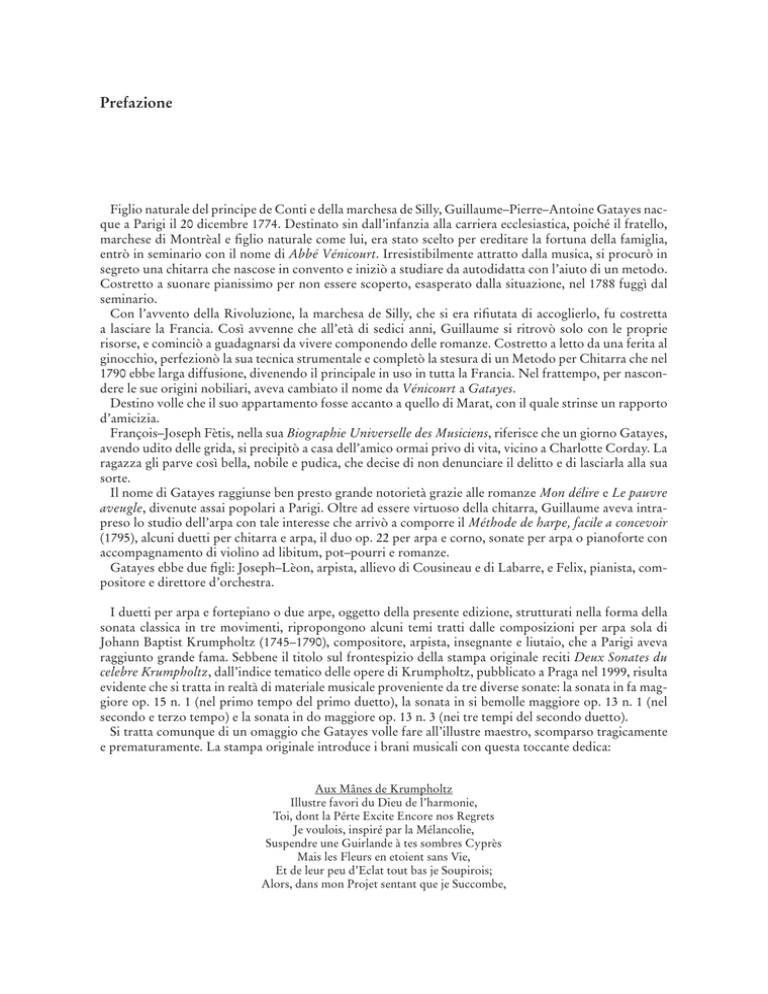
Prefazione
Figlio naturale del principe de Conti e della marchesa de Silly, Guillaume–Pierre–Antoine Gatayes nacque a Parigi il 20 dicembre 1774. Destinato sin dall’infanzia alla carriera ecclesiastica, poiché il fratello,
marchese di Montrèal e figlio naturale come lui, era stato scelto per ereditare la fortuna della famiglia,
entrò in seminario con il nome di Abbé Vénicourt. Irresistibilmente attratto dalla musica, si procurò in
segreto una chitarra che nascose in convento e iniziò a studiare da autodidatta con l’aiuto di un metodo.
Costretto a suonare pianissimo per non essere scoperto, esasperato dalla situazione, nel 1788 fuggì dal
seminario.
Con l’avvento della Rivoluzione, la marchesa de Silly, che si era rifiutata di accoglierlo, fu costretta
a lasciare la Francia. Così avvenne che all’età di sedici anni, Guillaume si ritrovò solo con le proprie
risorse, e cominciò a guadagnarsi da vivere componendo delle romanze. Costretto a letto da una ferita al
ginocchio, perfezionò la sua tecnica strumentale e completò la stesura di un Metodo per Chitarra che nel
1790 ebbe larga diffusione, divenendo il principale in uso in tutta la Francia. Nel frattempo, per nascondere le sue origini nobiliari, aveva cambiato il nome da Vénicourt a Gatayes.
Destino volle che il suo appartamento fosse accanto a quello di Marat, con il quale strinse un rapporto
d’amicizia.
François–Joseph Fètis, nella sua Biographie Universelle des Musiciens, riferisce che un giorno Gatayes,
avendo udito delle grida, si precipitò a casa dell’amico ormai privo di vita, vicino a Charlotte Corday. La
ragazza gli parve così bella, nobile e pudica, che decise di non denunciare il delitto e di lasciarla alla sua
sorte.
Il nome di Gatayes raggiunse ben presto grande notorietà grazie alle romanze Mon délire e Le pauvre
aveugle, divenute assai popolari a Parigi. Oltre ad essere virtuoso della chitarra, Guillaume aveva intrapreso lo studio dell’arpa con tale interesse che arrivò a comporre il Méthode de harpe, facile a concevoir
(1795), alcuni duetti per chitarra e arpa, il duo op. 22 per arpa e corno, sonate per arpa o pianoforte con
accompagnamento di violino ad libitum, pot–pourri e romanze.
Gatayes ebbe due figli: Joseph–Lèon, arpista, allievo di Cousineau e di Labarre, e Felix, pianista, compositore e direttore d’orchestra.
I duetti per arpa e fortepiano o due arpe, oggetto della presente edizione, strutturati nella forma della
sonata classica in tre movimenti, ripropongono alcuni temi tratti dalle composizioni per arpa sola di
Johann Baptist Krumpholtz (1745–1790), compositore, arpista, insegnante e liutaio, che a Parigi aveva
raggiunto grande fama. Sebbene il titolo sul frontespizio della stampa originale reciti Deux Sonates du
celebre Krumpholtz, dall’indice tematico delle opere di Krumpholtz, pubblicato a Praga nel 1999, risulta
evidente che si tratta in realtà di materiale musicale proveniente da tre diverse sonate: la sonata in fa maggiore op. 15 n. 1 (nel primo tempo del primo duetto), la sonata in si bemolle maggiore op. 13 n. 1 (nel
secondo e terzo tempo) e la sonata in do maggiore op. 13 n. 3 (nei tre tempi del secondo duetto).
Si tratta comunque di un omaggio che Gatayes volle fare all’illustre maestro, scomparso tragicamente
e prematuramente. La stampa originale introduce i brani musicali con questa toccante dedica:
Aux Mânes de Krumpholtz
Illustre favori du Dieu de l’harmonie,
Toi, dont la Pérte Excite Encore nos Regrets
Je voulois, inspiré par la Mélancolie,
Suspendre une Guirlande à tes sombres Cyprès
Mais les Fleurs en etoient sans Vie,
Et de leur peu d’Eclat tout bas je Soupirois;
Alors, dans mon Projet sentant que je Succombe,
Preface
Guillaume–Pierre–Antoine Gatayes (illegitimate son of prince de Conti and marquise de Silly), was
born in Paris on December, 20th, 1774. His brother, marquis of Montrèal (also an illegitimate son), was
destined to inherit the family wealth, therefore the young Guillaume had no other choice but enter seminary, with the name of Abbé Vénicourt. Irresistibly fascinated by music, he secretly kept a guitar and
practiced on his own, with the aid of a method. He was obliged to play the guitar always pianissimo and
in 1788, being frustrated, he escaped from the seminary.
With the Revolution his mother, marquise de Silly, was obliged to leave France. At the age of sixteen
he remained alone and begun to earn his living as a composer. In the same period a wounded knee forced
him to bed; he thus had the opportunity to study and improve his guitar technique. In 1790 he published
his method for the guitar, which soon became the most popular in France. In the meanwhile he changed
his name from Vénicourt to Gatayes.
His destiny led him to a close friendship with Marat, who lived in the apartment next to his. François–
Joseph Fètis, in his Biographie Universelle des Musiciens, tells that one day Gatayes heard screaming and
run to the home of his friend, who was already dead: next to his body was Charlotte Corday. The girl
looked so handsome, noble and pure, that Gatayes decided to let her go.
Gatayes’ name became soon very popular in Paris, thanks to his romances Mon délire and Le pauvre
aveugle. Besides being a guitar virtuoso, he also took the harp, with such a passion that in 1795 he published his Méthode de harpe, plus several duets for guitar and harp, the Duo op. 22 for harp and French
horn, Sonatas for harp or piano with accompaniment of violin ad libitum, Pot–pourris and Romances.
Gatayes had two sons: Joseph–Lèon, harpist, pupil of Cousineau and Labarre, and Felix, pianist, composer and conductor.
The present two duets for harp and fortepiano or two harps are based on themes by the celebrated
harpist and composer Johann Baptist Krumpholtz (1745–1790). The original title is as follows: Deux
Sonates du celebre Krumpholtz. Actually, the themes are taken from three different compositions: Sonata
in F major op. 15 n. 1 (1st movement of the 1st duet), Sonata in B flat op. 13 n. 1 (2nd and 3rd movement)
and Sonata in C major op. 13 n. 3 (2nd duet). These compositions are a true homage that Gatayes wanted
to pay to the master. The original print bears this touching dedication:
To Krumpholtz’s Gods.
Celebrated favourite of the God of Harmony,
for you, whose loss still excite our regrets,
I want, inspired by melancholy,
to append a garland to your sober cypress,
but its flowers are lifeless,
and here I cry their feeble colours;
Thus, feeling that I am failing my scope,
I suddenly change the project;
I will spread a bouquet composed by your own hand,
and I will ornate your grave with your own flowers.
The present edition is based upon the print published in Paris chez l’Auteur and in Bordeaux chez
Filliatre. The title page reads as follows: «Deux / SONATES / du célébre Krumpholtz / ARRANGÉES /
EN DUOS / Pour Harpe et Piano / PAR GATAYES / Œeuvre VII. / … / Ces Duos, peuvent S’executer
sur deux Harpes ou deux Pianos.»
The musical text has been kept as close as possible to the original one; the use of accidentals has been
modernized; abbreviations and refrains have been written out in full.
EMANUELA DEGLI ESPOSTI

